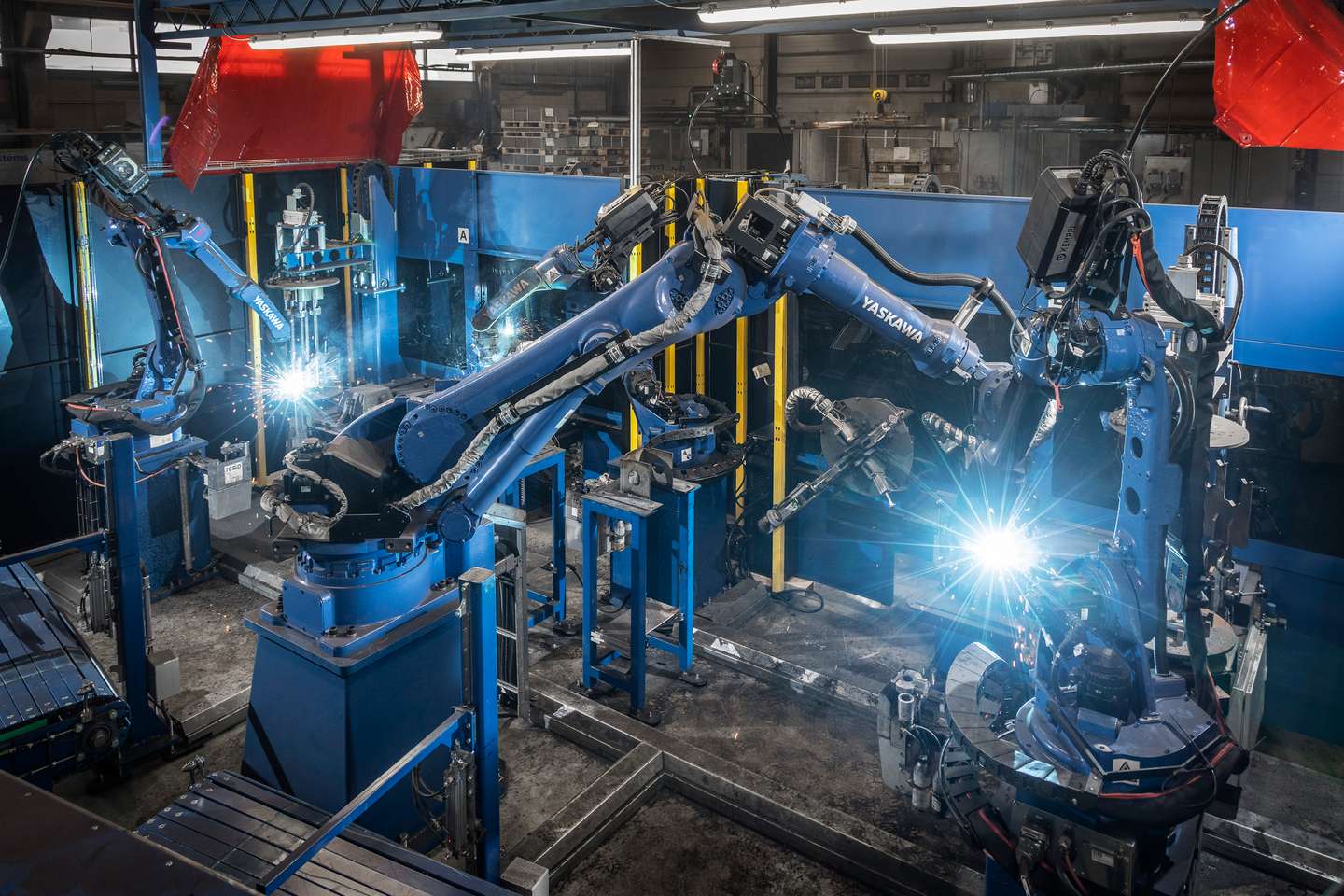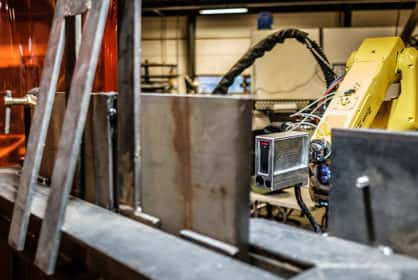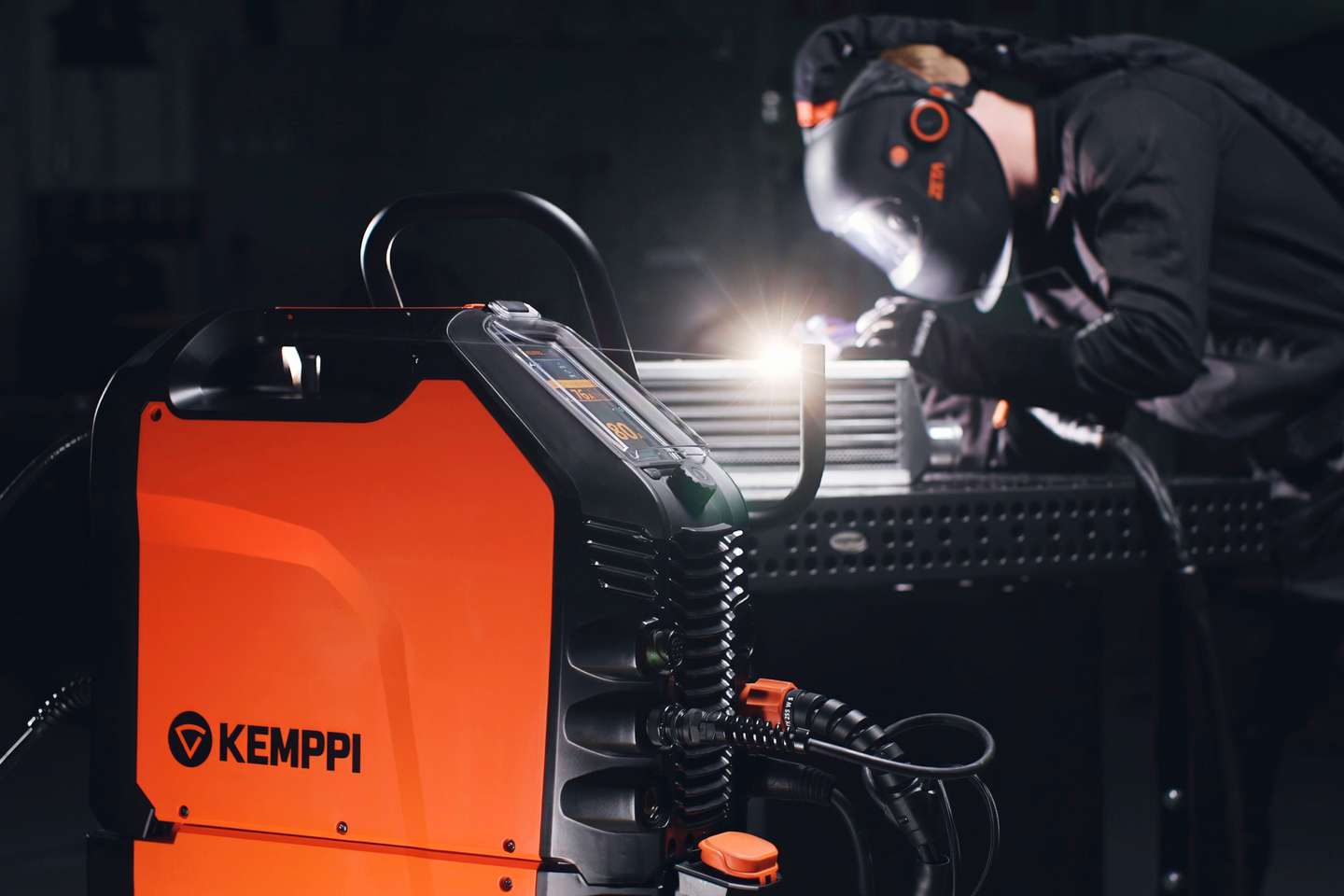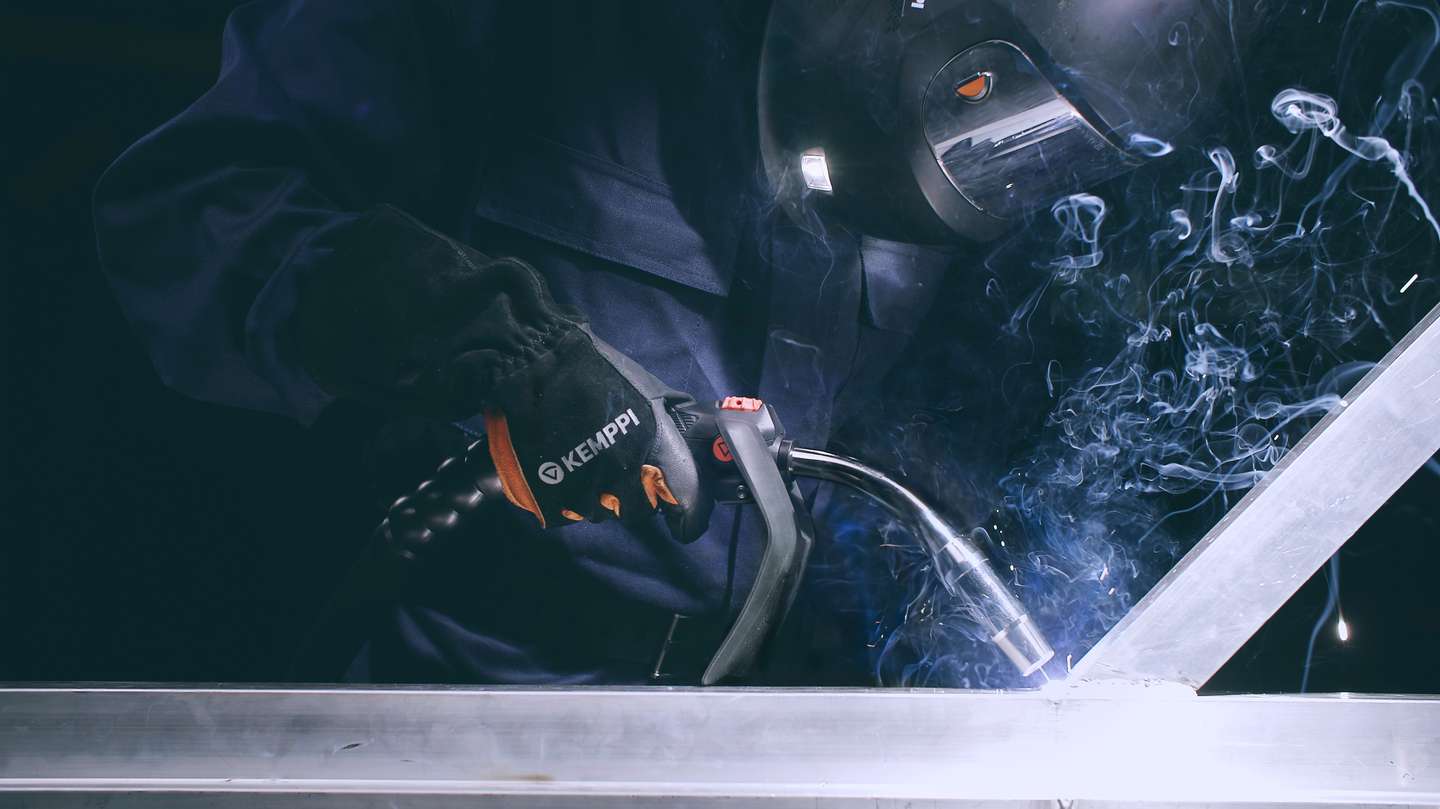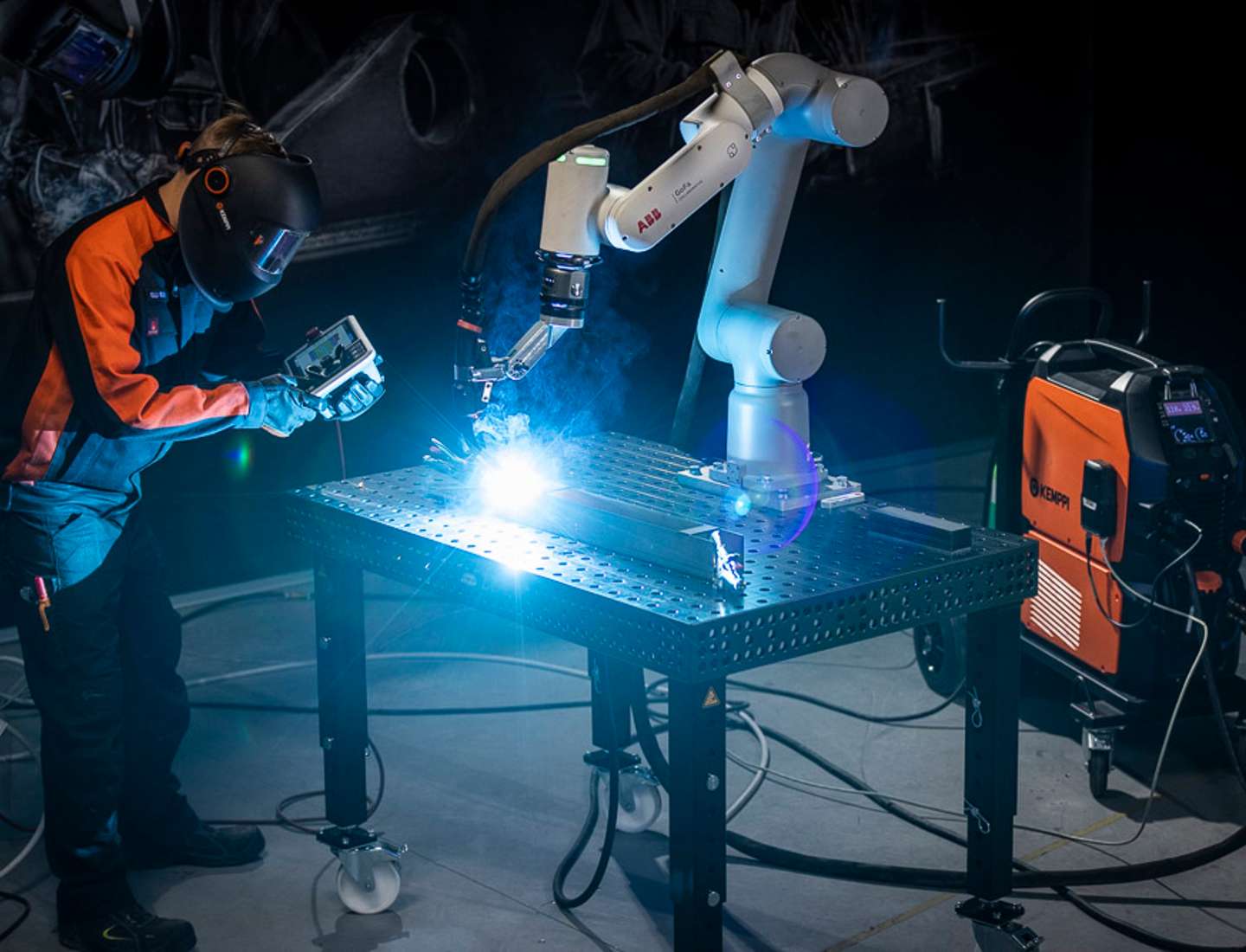
Automatyzacja spawania
Cobot welding - a passing trend or a new era for the industry?
2 października 2023
Welding cobots, compact-sized welding robots working side by side with humans, have become trendy in the industry, not least because of the worldwide lack of welders. What are the benefits of cobots, and will they finally take over the welding world as we know it?
Anu Rousku

Anu Rousku
Anu Rousku
Marketing Communications Specialist at Kemppi Oy until September 2020. Experienced professional in content marketing with a demonstrated history of working in the industrial B2B sector. Playing with words, persuading the reader, with the spirit of getting things done – it is all seen in the result.

